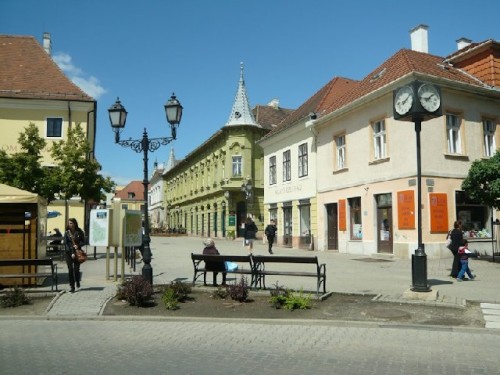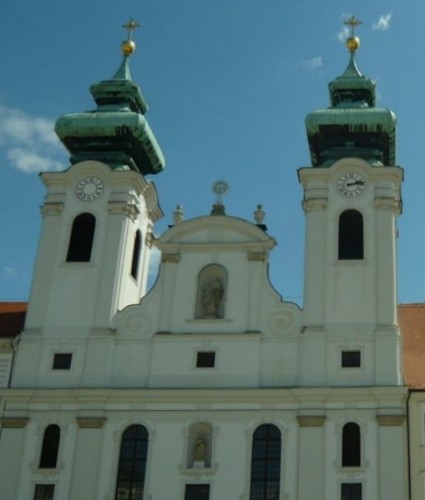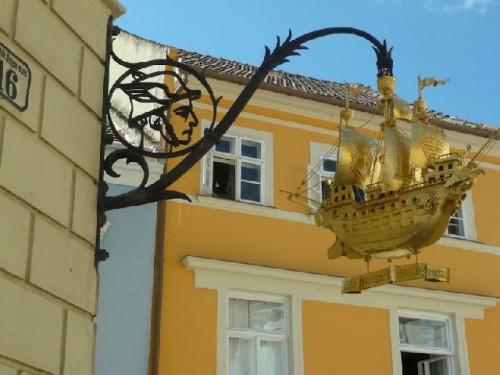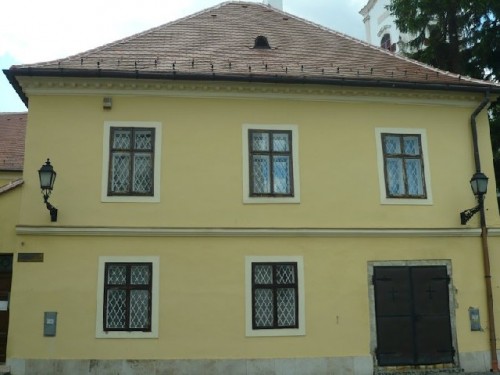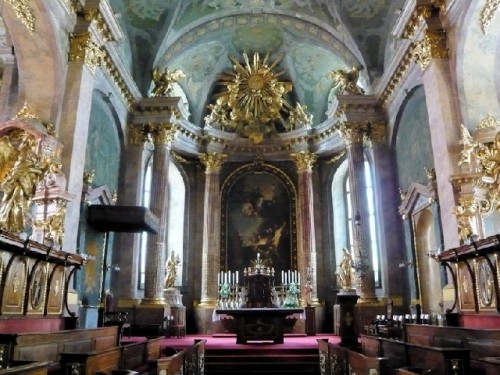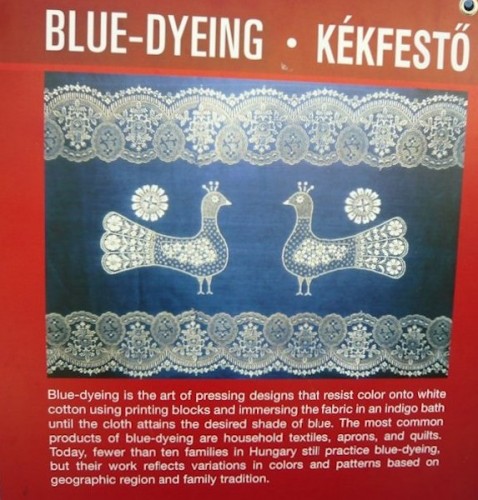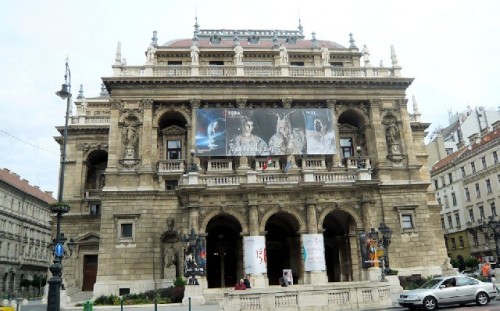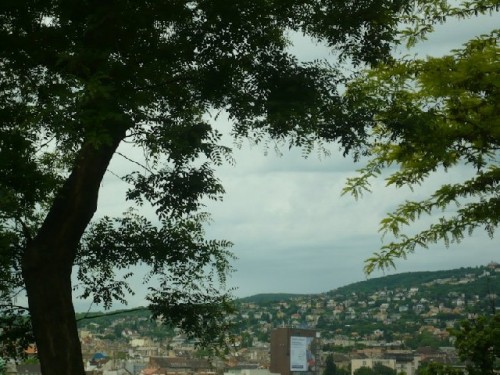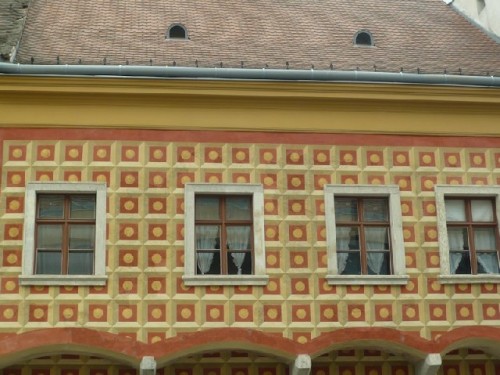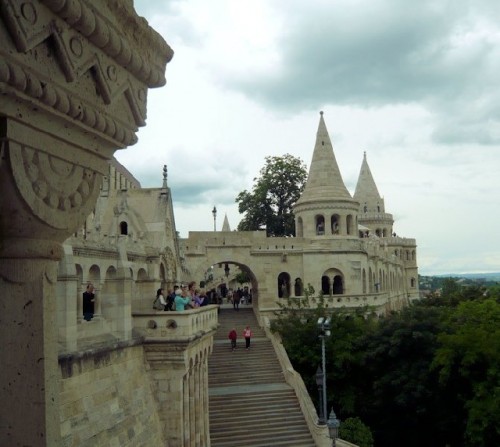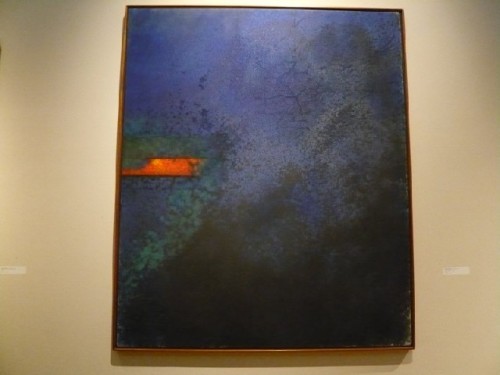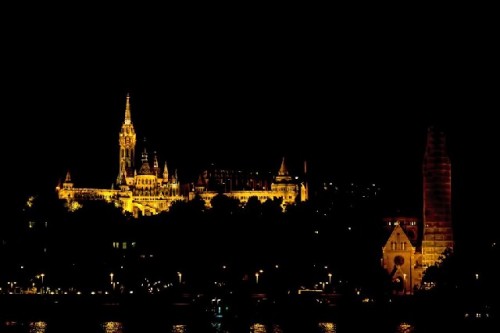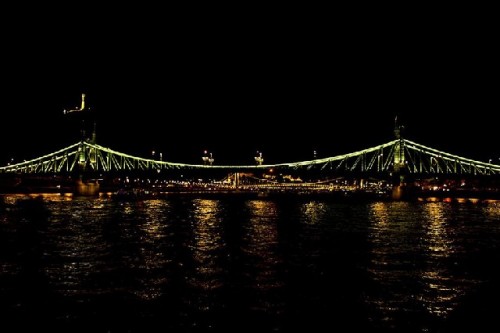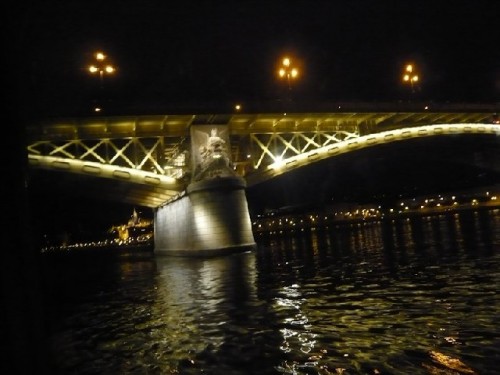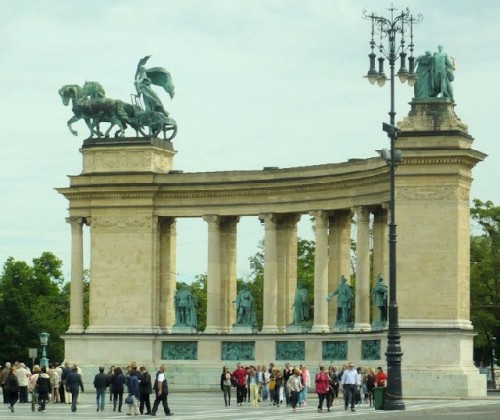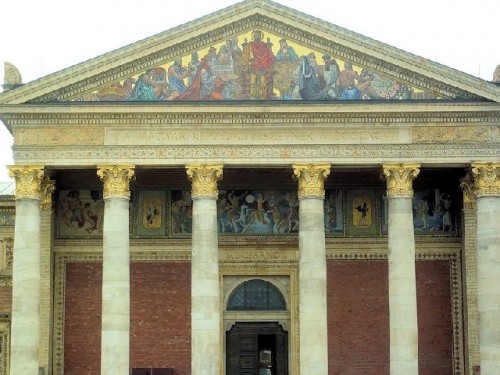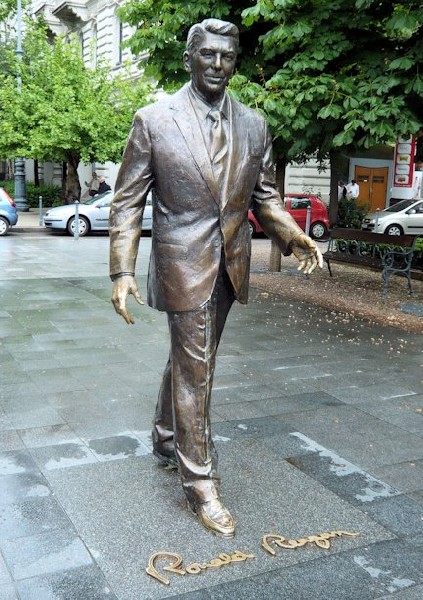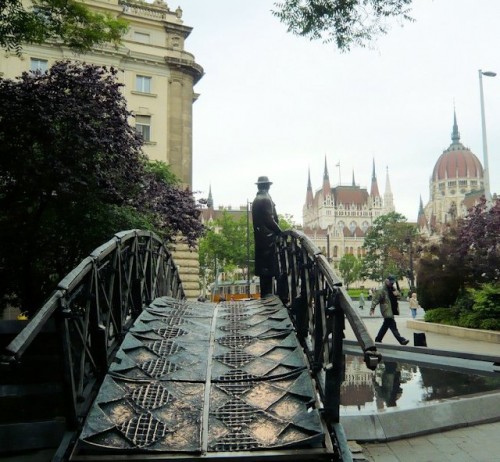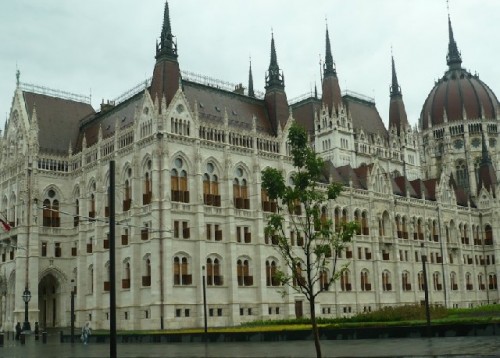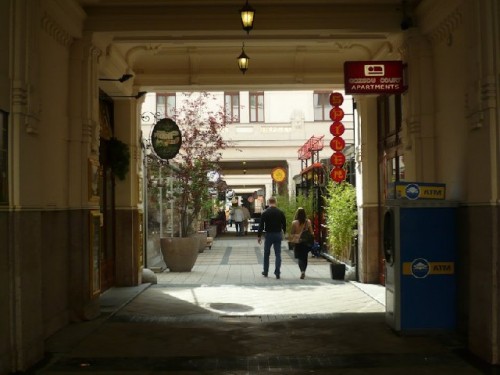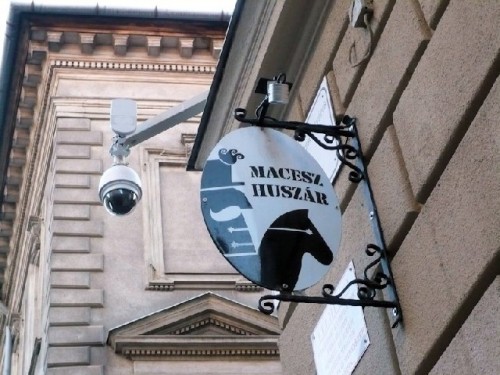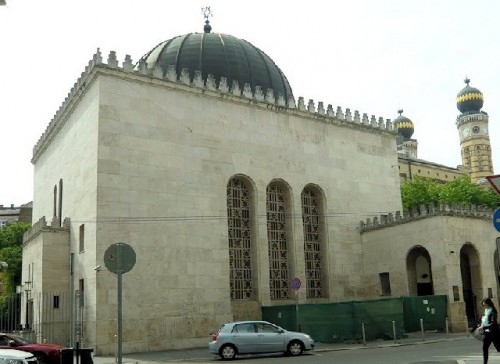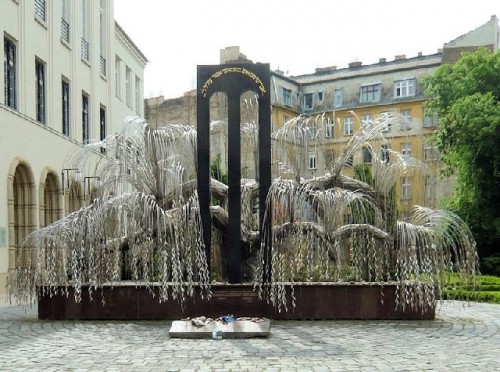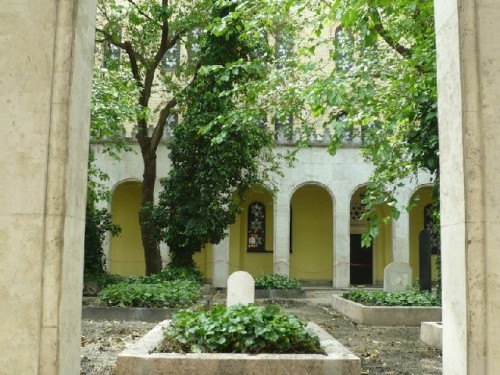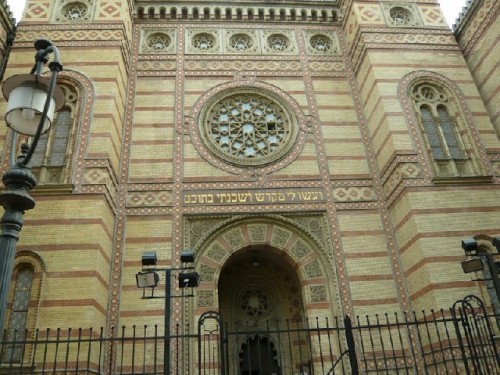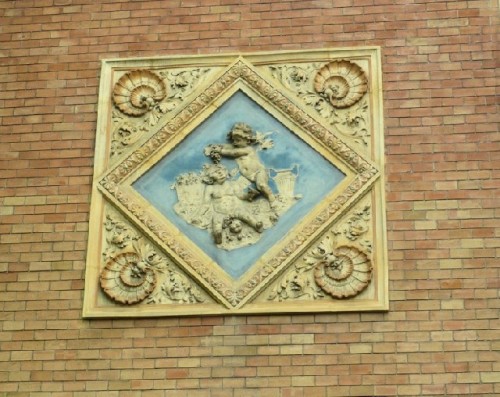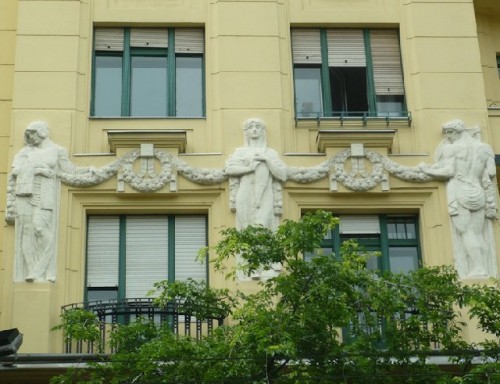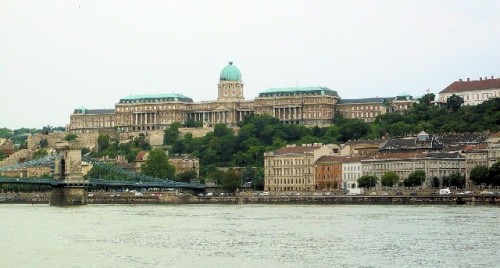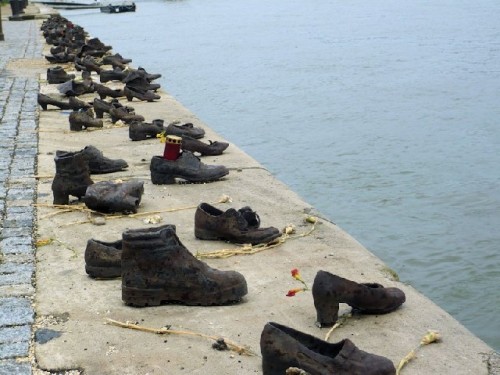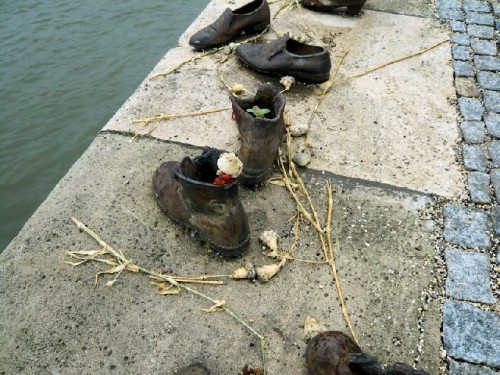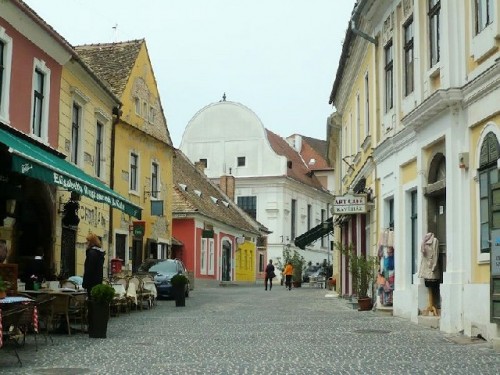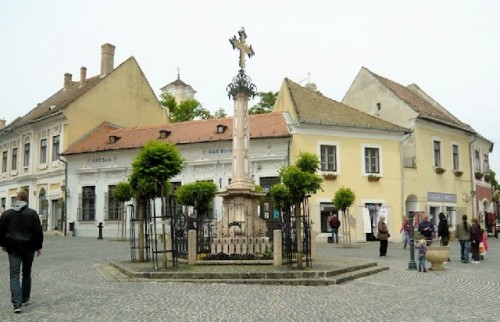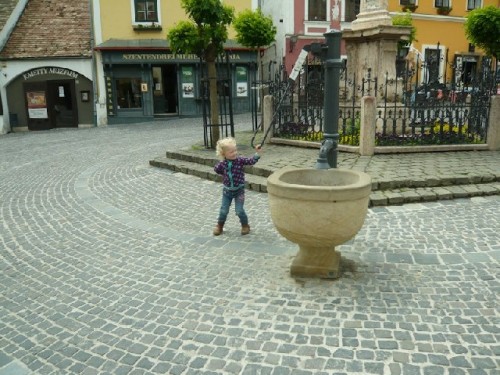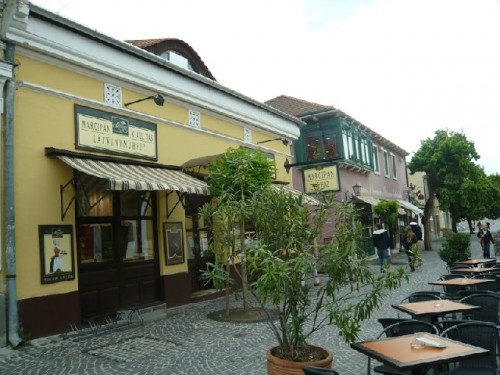Hungary
Gyor, Budapest and Szentendre
By: Zeren Earls - Jul 14, 2014
Leaving Austria, we crossed into northwest Hungary, stopping in Gyor, an ancient city situated at the confluence of the Danube, Raba and Rabca rivers.The city has a pedestrian-only historic core, dotted with baroque and neoclassical structures; its quaint streets are lined with craft and sweet shops and wine bars. We stopped for lunch in Kisfaludy, a small authentic cellar with arched brick walls, decorated with wine bottles and corks. Goulash and chocolate cherry cake was the menu of choice for our included lunch, following which we had time to stroll.
In addition to the architectural treasures of the city center, like the Basilica, the shops were appealing with their folk crafts, such as ceramics and textiles. Blue-dyed fabrics — color-resistant block-print designs on white cotton, immersed in an indigo bath — stood out in specialty shops. The patterns of this art, which is still practiced by only ten families in the country, vary based on region and family tradition.
Continuing on to Budapest for the final three days of our trip, we arrived in Buda on the west bank of the Danube. Crossing the bridge, we reached Pest, the commercial center on the east bank. Driving through elegant streets, we ended our day at the K+K Hotel Opera, which, as the name suggests, was around the corner from the grand neo-Renaissance Hungarian State Opera House.
Dinner was at Macesz Huszár, a Jewish bistro, where my Hungarian friend Márton Orosz met me to discuss plans for my visit to the Kepes Institute, Museum and Cultural Center in Eger, home town of artist and educator György Kepes, founding director of the Center for Advanced Visual Studies at MIT. Márton visited me in Cambridge in 2011 while working on a monograph on Kepes, a close friend and neighbor of my late husband’s and mine. Márton, an art historian and curator at the Budapest Museum of Fine Arts and an authority on Kepes, curated the permanent exhibition of Kepes’s works at the Institute, which opened in 2012 to honor and showcase the artist’s legacy. Hence my compelling desire to visit the Institute, although it was an almost-two-hour trip by bus.
Our morning itinerary was dedicated to Buda’s Castle Hill; a massive complex 180 m above the Danube, its ramparts designated a UNESCO World Heritage Site. In this area one walks back in time to the 13th century, when King Béla IV built a castle here after the Tartar invasion. The 1.5 km long, 500 meter wide area is packed with churches, museums, historic buildings, monuments, galleries, restaurants, and gift shops. Budapest’s attractive and famous Matthias Catholic Church, due to its unique setting, defines the view of the Castle district, which offers sweeping vistas of the river and the city below.
Márton, who lives in the area, met me at the end of our tour and accompanied me on a public bus down the hill, then guided me to the metro, which delivered me to the bus depot for Eger. Feeling fortunate to have had Márton’s assistance this far, I hopped on the bus, bidding him goodbye. He was unable to accompany me all the way, as he was preparing to defend his doctoral dissertation soon.
An hour and forty-five minutes later, I was met by two young staff members of the Kepes Institute in Eger, Hungary’s second largest museum. The extensive permanent collection chronicling Kepes’s photographs, drawings, paintings, and light works throughout his career occupies the museum’s main floor and balconies. The museum also has sixty of the artist’s original correspondence with other influential thinkers of his time, such as Archipenko, Gropius, and Mondrian. Other galleries in the museum are dedicated to temporary exhibits of important contemporary artists. After a couple of hours in the galleries and a brief visit with the director, I asked my guides to take me back to the bus stop for my return trip to Budapest, in order not to miss the evening cruise.
Budapest’s night scenery is packed with indelible images. The hour-long river cruise took us by brilliantly illuminated monuments along Pest’s Danube Promenade and Buda’s Castle Hill.The city’s distinctive architecture delineated in lights glowed in the distance, while its emblematic Chain Bridge, guarded by four lions at both ends, shimmered in the river’s waters.
Our final day included a walk down elegant Andrássy Avenue, followed by a guided tour by Mr. Gábor, a witness at the age of eleven to the Soviet take over of Hungary in 1956, a time when students and workers took to the streets against control of the region. He spoke about the fear in the country and hushed conversations at home; people suspected of speaking against the Communist party were imprisoned and tortured until they confessed to wrong doing.
Our walk continued to Heroes’ Square, honoring all past Hungarian heroes with the Millennium Memorial, punctuated by a 36-meter-high column at its center. The column is topped by a statue of the Archangel Gabriel holding the Hungarian Holy Crown and apostolic double cross. Between the pillars of the colonnade are figures from Hungarian history, while the butt piers are embellished with sculptures representing work, welfare, knowledge, honor, and peace. The Tomb of the UnknownSoldier is located in front of the monument. Nearby is a sculpture of Ronald Reagan, because of his heroic stance against Communism. The Museum of Fine Arts and the Contemporary Art Museum also face the Square.
Mr. Gábor continued to talk on the way to the Jewish Quarter. Jews lived safely here until Hitler arrived, convincing the party members of Hungary to side with him. Thus the deportation of Jews began, starting with those living in the country. Allied forces arrived in time to save those living in Budapest, which has the third largest Jewish population in Europe.
Dohány Street Synagogue, a glorious building in Byzantine-Moorish style, is Europe’s largest synagogue and the second largest in the world. Built in the mid-19th century, it is faced in white and red brick with ceramic decorative elements, and has two ornate green metal onion-dome towers. The synagogue complex includes the Jewish Museum and Cemetery; the Temple of Heroes in memory of the Jewish heroes of World War I; and the Raoul Wallenberg Memorial Park, which features a metal weeping willow bearing the names of victims on every leaf.
Mr. Gábor’s parting story took place by the riverside, where Jews were shot into the Danube by Nazi soldiers, exhausted from deporting them. Stunned into silence, we stood at this segment along the riverbank, lined by bronze shoes of various shapes and sizes from boots to high heels, children’s to adults’ — a most moving memorial to this dark history of mankind.
Afterwards we headed outside the city to Szentendre, a picturesque town of Serbian settlement along narrow streets ascending from its main square. We had lunch at the Golden Dragon (Aranysárkány Vendéglo), recognized by its trade sign, which hangs above the door. At this popular restaurant we were treated to chicken breast with rice, followed by a dessert of crepes filled with walnuts and almonds and drizzled with berry syrup.
Walking along the cobblestone streets lined with craft shops and marzipan cafes, in addition to a Serbian church, enhanced the charm of the town. Among the local specialties, besides marzipan, are hand-crafted knives, blue-dyed textiles, and ceramics, which feature the region’s famous Tokay grapes in their design and color. I bought a ceramic plate with the design of a bird holding a bunch of grapes in its beak at the center. A copper-edged ring with indigo-dyed fabric under glass completed my local souvenirs.
Back in Budapest during a farewell toast at the hotel, Emil surprised us by passing around a box of marzipan — delicious. Over dinner with gypsy music at a nearby restaurant, we bade farewell. Having enjoyed each other’s camaraderie during this memorable trip, some of us began talking about traveling together to the Baltic capitals of Lithuania, Latvia, and Estonia in 2015. Those of us with a passion for travel never stop dreaming about the next adventure yet to come.

